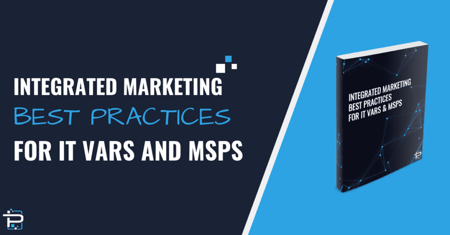Historically, the IT space is one that is extremely reactive, especially when it comes to SMB clients. When a business has an IT issue, they find someone who can fix it as quickly and cost efficiently as possible, and they get back to work. Where a relationship with an IT service provider exists, it’s the same model except they know up front who they are going to work with. This “break-fix” model is changing, and fast.
The Modern Business Model for IT Firms
Over the years, IT firms have moved towards a retainer-based monthly recurring model for the IT support services they provide. This has been preceded by the constant requirement for updates and upgrades to software, programs, and IT tools that businesses use. It makes perfect sense for businesses to have someone on retainer who they can call upon to handle any issues that arise in the normal course of operations. The fear of disruption and downtime is a major motivator in this regard, as the cost for downtime is higher than ever.
There are many benefits for businesses who leverage a managed services model outside of avoiding downtime. For one, businesses are happy to outsource this task, as it frees up internal resources and enables them to focus on the core areas of the business rather than handle IT problems all the time. Additionally, businesses don’t want to call in a specialist every time they experience a problem. With a new business app or software, problems can emerge unexpectedly and being unprepared can be just as bad as having to handle disruption.
The Disparity Between Marketing and Business Model
When it comes to business model, IT MSPs have to be proactive. They cannot wait for problems to materialize before handling them. Their current model, i.e. a monthly retainer, compels them to focus on the system round the clock and point out any anomalies or potential problems that may arise down the line. Companies expect MSPs to deal with these problems before they exacerbate and end up causing losses and downtime. Previously, they have been complicit to being reactive, i.e. waiting for problems to show up before dealing with them.
However, the marketing model of the large majority of MSPs does not align with this philosophy. More often than not, VAR and MSP websites are static and form, and talk about potential problems they can solve. This model only allows for organic traffic to find them when a client already has an issue. In addition to this, marketing content is typically prepared on a one-off as needed basis….the same way that companies call an IT firm after they have a problem
This goes beyond marketing content and even applies to the technical aspect of marketing. For example, if you are handling a website, you know that sooner or later, it will need an update. Companies that are ahead of the game and use marketing as a true revenue driver are constantly evaluating their website and making ongoing changes to ensure it stays up to date and remains a success channel.
This lack of long-term planning in their marketing clashes head-on with their approach to business and hence, you might be unable to attract customers who are actually looking for a managed service provider. Your target customers have plenty of options to choose from, and they generally take their time to research before they move forward as it’s not an immediate need.
It is now becoming very costly to have a short-term approach to marketing. Customer churn is something that can kill IT firms, especially those with a small sales team. The business model must match the marketing model in order for these companies to remain successful in the coming years.
What’s the Solution?
Take action. A long term strategy must be put in place that focuses on how to attract companies looking for a firm who can help them think long term when it comes to their IT. There has to be a plan with clear ownership of who is doing what when.
Another alternative is to leverage a marketing firm, the same way organizations leverage a managed services provider. Marketing firms have the expertise and have learned from experience as to what works, and what doesn’t work.
What do you think? Leave us a comment to start the conversation and we’ll reply back.
